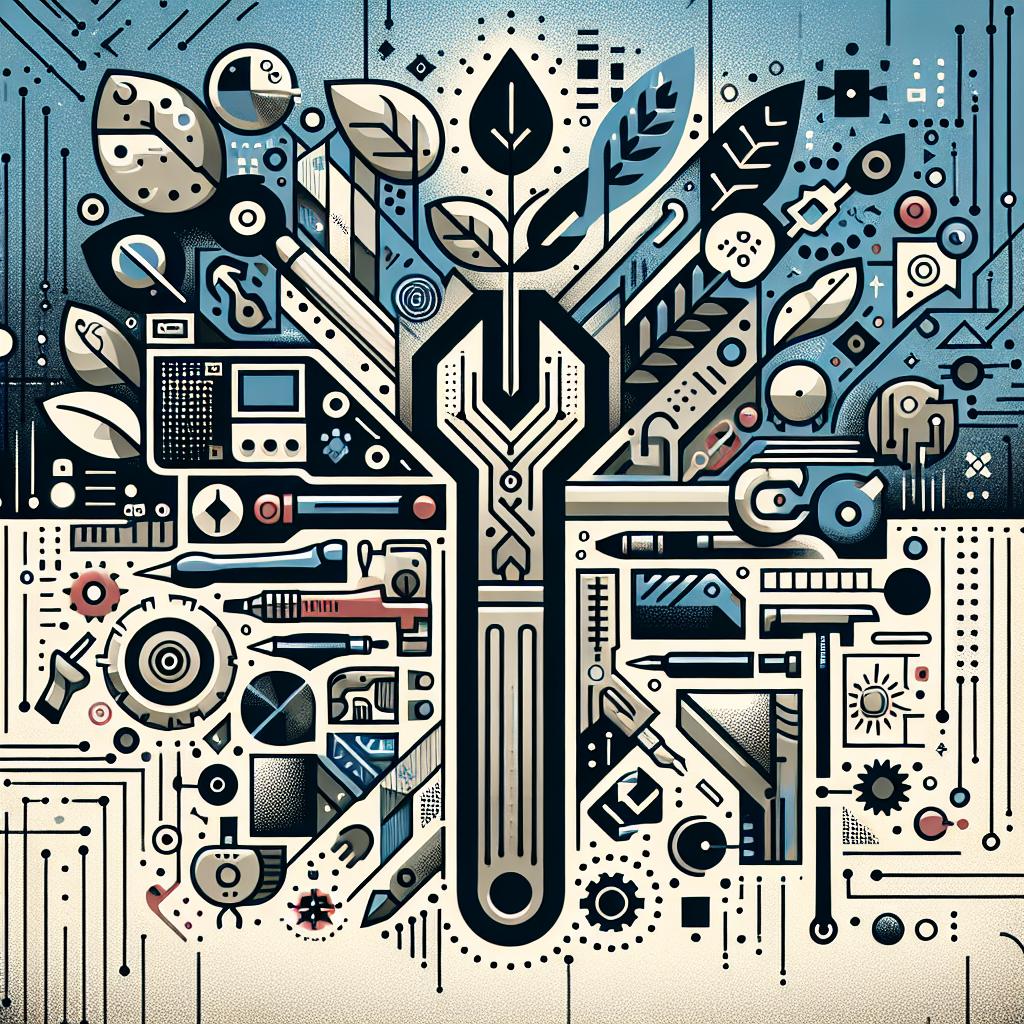This post may contain affiliate links which means I may receive a commission for purchases made through links. Learn more on my Private Policy page.
The Essential Tools You Need for Irrigation System Installation: A Gardener’s Toolkit for Success
Picture this: a sun-kissed garden brimming with vibrant blooms and lush greenery, all thriving in harmony thanks to a well-planned irrigation system. Whether you’re a seasoned gardening guru or a curious newbie with visions of a flourishing yard, the key to transforming your outdoor space lies in the tools you wield. Just like a painter needs a brush and a sculptor seeks the perfect chisel, every gardener embarking on an irrigation system installation journey requires a specific set of tools to ensure their vision comes to life. In this article, we’ll explore the essential tools that will not only make your installation process smoother but also add a sprinkle of fun to the task. So, grab your gardening gloves and let’s dig into the world of irrigation with a friendly nudge of inspiration and practicality!
Choosing the Right Pipe Material for your Irrigation Success
When planning your irrigation system, the choice of pipe material is pivotal to the long-term success and efficiency of your setup. Each material offers distinct advantages and disadvantages,making it essential to consider factors such as durability,cost,and ease of installation. For example, PVC pipes are popular due to their lightweight and corrosion-resistant properties but may not withstand extreme temperatures as well as other options.Conversely, galvanized steel pipes provide durability and strength but may be heavier and more challenging to work with.
Here’s a quick comparison of some common pipe materials to help you make an informed decision:
| Material | Pros | Cons |
|---|---|---|
| PVC |
|
|
| PE (Polyethylene) |
|
|
| Galvanized Steel |
|
|
Ultimately,selecting the right pipe material for your irrigation system hinges on understanding your specific needs,environmental conditions,and budget. By weighing these factors thoughtfully, you can ensure a seamless installation process and an irrigation system that thrives.

Mastering the Art of Valves: A Guide to Flow Control
When it comes to ensuring efficient water flow in irrigation systems, understanding the different types of valves is essential. each valve type serves its unique purpose, allowing you to control water distribution in your garden or agricultural area. Here are some of the most critically important valve types to consider for your irrigation setup:
- gate Valves: Ideal for on/off control, ensuring minimal flow obstruction.
- Ball Valves: Known for their quick operation and tight sealing, making them perfect for main control.
- Check Valves: Essential for preventing backflow and maintaining system integrity.
- Pressure Relief Valves: Important for regulating system pressure and protecting your irrigation components.
Moreover, having the right tools at your disposal will make the installation and maintainance of these valves a breeze. Below is a handy table illustrating key tools that every irrigation installer should have:
| Tool | Purpose |
|---|---|
| Pipe Wrench | For tightening or loosening pipe fittings. |
| Tape Measure | Ensures accurate cuts and placements. |
| Utility Knife | For cleanly cutting plastic pipes and fittings. |
| Pliers | For gripping and bending various components. |

Essential Tools for Digging and Installation Made Easy
When it comes to setting up your irrigation system, having the right tools at your fingertips can make all the difference in streamlining the process. Here are some essential tools that will simplify your digging and installation tasks:
- Shovel: Perfect for digging trenches and planting, look for a durable model with a sharp blade for cutting through tough soil.
- Trowel: A smaller tool that’s handy for more precise work, such as shaping holes for plants or adjusting pipe placement.
- Pipe Wrench: This is vital for tightening or loosening pipes during installation; choose a cozy grip for better control.
- Garden Rake: Ideal for leveling soil after digging, helping to ensure that everything is set smoothly for the installation.
- Water Level: Useful for checking the evenness of your excavated area, ensuring your irrigation will function effectively.
In addition to these tools, consider investing in a post-hole digger for creating deep holes for plants or fixtures. Incorporate a knee pad to protect your knees while on the ground and a bucket for transporting soil or debris easily. Here’s a simple table summarizing the benefits of each tool:
| Tool | Benefit |
|---|---|
| Shovel | Effortlessly dig trenches |
| Trowel | Precision digging |
| Pipe wrench | Ease of pipe adjustments |
| Garden Rake | Leveling soil for better drainage |
| Water Level | Check for even ground |

the Final Touch: Testing Your System for Optimal Performance
Once your irrigation system is installed, it’s time to ensure that every component is operating seamlessly. Testing your system not only ensures that it delivers adequate water coverage but also optimizes efficiency, reducing wastage and saving you money in the long run. Start with a full inspection of your setup, checking for any leaks, clogs, or misaligned components that could hinder performance. Pay careful attention to the drippers, sprinklers, and valves, as these are critical points in your irrigation network.
To streamline the testing process, consider utilizing a checklist that covers all the essential aspects of your system. Here’s a simple overview you can adapt:
| Test Component | What to Check |
|---|---|
| Water Pressure | Ensure it meets manufacturer specifications. |
| Coverage Area | Check for dry spots or over-saturated areas. |
| Valve Functionality | Confirm all valves open and close properly. |
| timers and Sensors | Test their accuracy and responsiveness. |
By thoroughly checking all these key points, you’ll be well on your way to achieving an optimally functioning irrigation system. Remember to make adjustments as needed and keep a record of your findings for future reference. Happy watering!
Wrapping Up
As we wrap up this journey through the essential tools for irrigation system installation, we hope you’re feeling inspired and ready to dig in – quite literally! Whether you’re a seasoned pro or a budding DIY enthusiast, arming yourself with the right tools is the first step toward creating a lush, green oasis in your backyard. Remember, every garden tells a story, and with these trusty companions by your side, you’ll be well on your way to cultivating a masterpiece that thrives.
So, roll up those sleeves, gather your gear, and don’t forget to have a little fun along the way! Every drip, every drop, and every well-placed pipe is a testament to your hard work and creativity. As you embark on this exciting project, may your plants flourish, your irrigation system run smoothly, and your gardening adventures bring you joy. happy gardening! 🌱💧
This post may contain affiliate links which means I may receive a commission for purchases made through links. Learn more on my Private Policy page.

